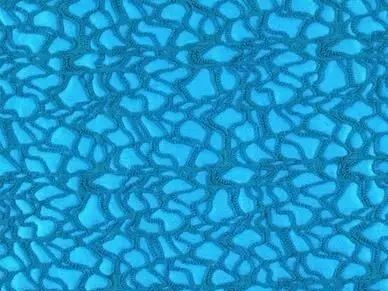
Four-hook to polyester fiber
The relative hydrophobicity of four-channel polyester fiber is better than cotton and wool in controlling the moisture content of the fabric. It can wick moisture from the human body to the surface of the fabric and remove it. The CoolMax products produced by American DuPont company using four-channel polyester fiber have excellent wicking ability and make fabrics with good comfort performance. They are mainly used to make sportswear and military uniforms.
High temperature resistant flame retardant fiber
There are high-performance carbon fiber and aramid fiber. Carbon fiber is resistant to high temperature, corrosion and radiation, and is widely used as a structural material for aviation equipment and construction projects. Aramid fiber is resistant to high temperature, flame retardant and high toughness, and can be made into various protective clothing, fire fighting clothing and bulletproof clothing.
Flame-retardant polyester fiber is flame-retardant due to the phosphorus atom contained in the polyester molecule. It is mainly used in hospitals, insurance industry, decorative cloth and industrial cloth; flame-retardant polypropylene fiber is processed through traditional processes or Adding additives to the polymer formula makes the polypropylene fiber flame-retardant. The product is mainly used for curtains, wall coverings and decorative cloth; melamine fiber is a new type of high-temperature resistant fiber with high flexibility and flame retardancy. , Can be used in the field of fire protection.
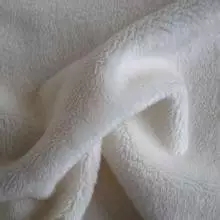
Antiviral and antibacterial fiber
It is made by mixing anti-viral and anti-bacterial agent into the spinning solution. The nano-scale silver-containing zeolite-containing inorganic anti-virus and anti-bacterial fiber is the most famous. It has broad-spectrum anti-virus and anti-bacterial properties and good thermal stability. It has the characteristics of long-lasting function, safety and reliability, and no drug resistance. It is mainly used for underwear, sanitary materials and bedding.
Antistatic fiber
By modifying the synthetic fiber, that is, adding an antistatic agent inside the polymer or introducing a third monomer to make the fiber itself antistatic. The products are mainly used in carpets, curtains, overalls in hospital operating rooms, and civil textiles such as anti-fouling and anti-sticking.
Far infrared fiber
It is made by melting ceramic powder and synthetic fibers such as polyester, polypropylene, viscose, etc. before spinning. It can convert the absorbed solar energy into heat energy required by the human body, promote blood circulation, increase the body's blood supply and oxygen supply, and accelerate the rate of metabolism , Improve the body's muscle energy. The products are mainly used in medical and health care fields.
UV resistant fiber
The anti-ultraviolet fiber made of ultraviolet shielding agent through melt spinning has a shielding rate of more than 92% for ultraviolet rays and a certain shielding effect on heat radiation. It is mainly used to make summer shirts, T-shirts and umbrellas.
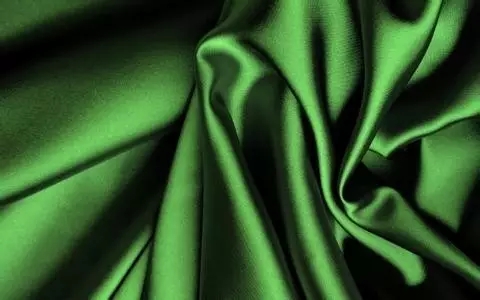
Natural fiber
(1) Natural colored cotton and wool, rabbit hair. By changing cotton genes and improving sheep and rabbit breeds, natural colored raw materials are formed. Since they are not corroded by dyes and additives, environmental pollution and harm to the human body can be reduced.
(2) Hemp fiber. Flax, ramie, jute and other hemp fibers have natural antibacterial and antibacterial properties, as well as certain health care functions, anti-ultraviolet and anti-static functions, and are natural green and environmentally friendly fibers.
(3) Tencel fiber. Tencel fiber fully reproduces the natural characteristics of wood pulp. It is a carbohydrate, biodegradable, no waste, no by-products, and can be completely recycled. It is a true "ecological protection" fiber.
(4) Polylactic acid fiber. It is made of renewable corn, wheat and other starch materials through fermentation, polymerization, and spinning. It is comfortable to wear, elastic, moisture-absorbing, breathable, heat-resistant and anti-ultraviolet. Its waste can be naturally degraded and is a green and environmentally friendly fiber. Mainly used to make underwear, outerwear, medical textiles and industrial materials.
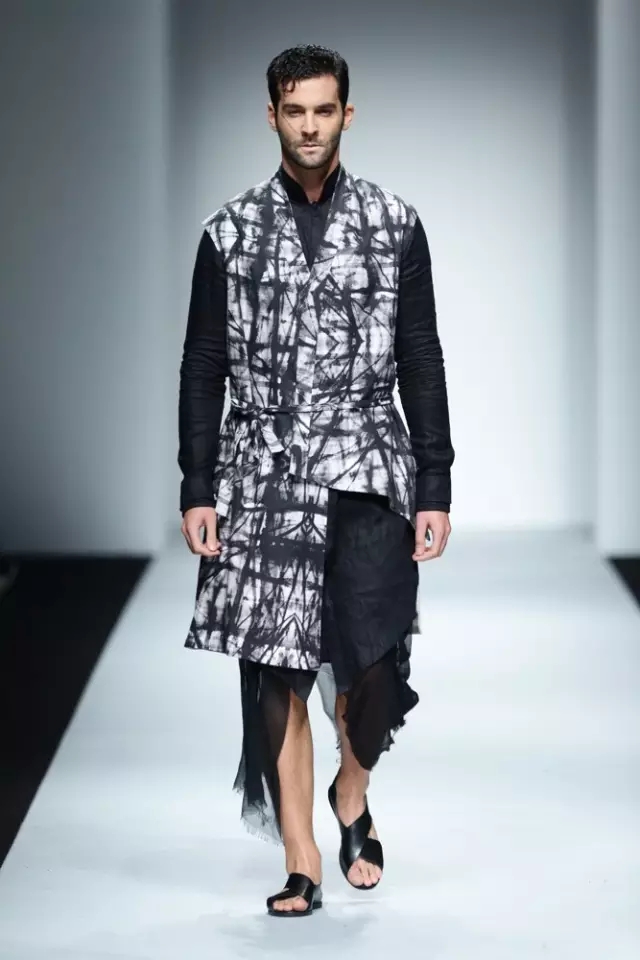
(5) Chitin fiber. The chitin fiber made from the shells of shrimp, crab, insects, etc., has good moisture absorption, air permeability, sterilization and deodorization properties, and the medical dressing made can have the effects of analgesia, hemostasis and promote wound healing. Mainly used in medical and health industries.
(6) Soybean fiber is a new type of regenerated plant protein fiber that is made from soybean meal with squeezed out oil as raw material, extracted plant globulin and synthesized. Before becoming a fiber, it is necessary to extract protein and polymers from soybeans as raw materials, use bioengineering and other high-tech processing, and wet spinning. This kind of monofilament has fine fineness, light specific gravity, high strength and elongation, strong acid and alkali resistance, and good moisture absorption and moisture conductivity. It has a cashmere-like soft feel, silk-like soft luster, cotton's excellent properties such as warmth retention and good skin affinity, as well as obvious antibacterial functions.
(7) Bamboo fiber. Bamboo raw fiber is a kind of brand new natural fiber. It is a natural bamboo fiber prepared by a combination of physical and chemical methods. Natural bamboo raw fiber and bamboo pulp fiber are essentially different. Bamboo raw fiber belongs to natural fiber, and bamboo pulp fiber belongs to chemical fiber. . Natural bamboo fiber has good properties such as moisture absorption, breathability, antibacterial and antibacterial, deodorization, and UV protection.

(8) Wood fiber. Pure natural wood fiber products are made of natural, non-polluting Australian fast-growing trees that are 2 to 3 years old, crushed and cooked into wood pulp to extract fiber. Through special technology and production process, the sugar and fat in wood are removed, and advanced technology is used to eradicate the electrostatic reaction of materials. It has the functions of natural antibacterial health care, removing peculiar smell, self-cleaning and self-cleaning. It is soft to the touch and does not become hard or hard. It is a pure green health product. Moreover, its uses are diversified, and it is widely used in kitchens, home appliances, automobiles, bathrooms and beauty makeup removers, and has an immeasurable market potential.
(9) Milk protein fiber. Milk silk is the milk protein obtained by skimming and dewatering liquid milk, plus a softener to make milk slurry, and then through wet spinning technology and scientific treatment, spun into milk protein fiber, and further spun into weaving Milk shreds of cloth. Milk shreds products contain as many as 17 kinds of amino acids. Wearing close-fitting has the effect of moisturizing the skin, nourishing the skin, and moisturizing the skin. At the same time, the milk silk also has a natural and long-lasting antibacterial function, and has an inhibitory effect on bacillus, cocci and mold that are harmful to the skin. The fabric woven with milk silk is light, soft, smooth, and draped. It is breathable, moisture-conducting and cool. Because milk silk has higher strength than cotton yarn (high count) and silk, it is resistant to moth and mildew, so it is more durable, washable and easy to store. The special properties of milk protein fiber show true, magnificent and long-lasting colors on fabrics and clothing. The affinity with dyes makes the colors particularly bright and vivid. As long as they are washed under suitable conditions, the colors can still be washed even after repeated washings. Bright as new. Milk protein fiber is not like other animal protein fibers, such as wool and silk, which are prone to mold or aging, and it can remain bright as new even if it is left for several years.
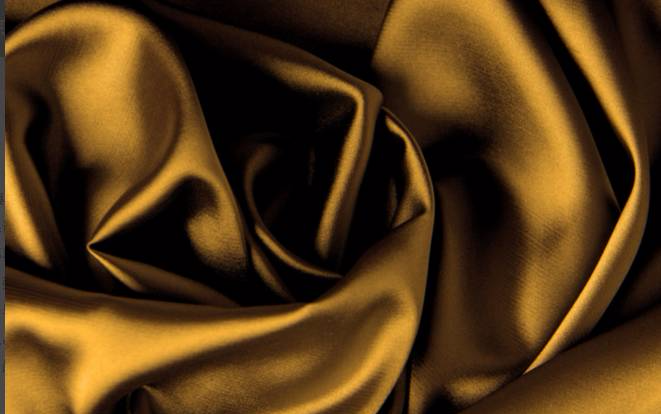
Smart fiber
(1) Shape memory fiber. After the fiber molecules are subjected to a special shaping treatment, the fiber with the original shape is deformed and fixed, and the original shape can be restored by the treatment of external stimulation means such as heating. Shape memory fibers have anti-wrinkle, wash-resistant, and non-iron properties, and are mainly used in the field of clothing.
(2) Photosensitive fiber. Synthetic fibers such as polypropylene fibers will change color under one kind of light and return to their original color under another kind of light. They are mainly used in military and nautical fields.
(3) Thermosensitive fiber. The fiber was successfully developed by the U.S. Aerospace Department using Outlast technology, which was made of phase inversion materials and ordinary fibers. This kind of fiber can change with the change of external temperature or heat, and is mainly used in working environments with large temperature differences, such as cold storage.
Another kind of automatic temperature-regulating textile made of special metal filament fiber and ordinary chemical or natural fiber plus other components can automatically sense the temperature of the surrounding environment, and adjust the heat dissipation rate of the clothes to make the temperature of the clothes surface and the temperature of the surrounding environment Consistent. Mainly used in the military, can play a stealth role.
(4) Anti-soaking wet fiber. Acrylic polymer is made by spinning, which has high air permeability and water absorption. When immersed in water, the acrylic polymer fiber absorbs water and expands to block the pores on the clothes, which can prevent the penetration of seawater into the clothes and play a life-saving effect. .
(5) Nanofibers. Nanomaterials are blocks, films, multilayer films and fibers that are aggregated from l-100nm particles. Nanofibers have a strong ability to absorb electromagnetic waves, and at the same time have the effects of waterproofing, anti-radiation, sterilization and mildew resistance. At present, the newly developed domestic nanofibers such as nano-layered silver inorganic antibacterial and antifungal fibers, hydrophobic polyacrylonitrile nanofibers and graphite nanofibers are mainly used in medical, clothing and energy fields.